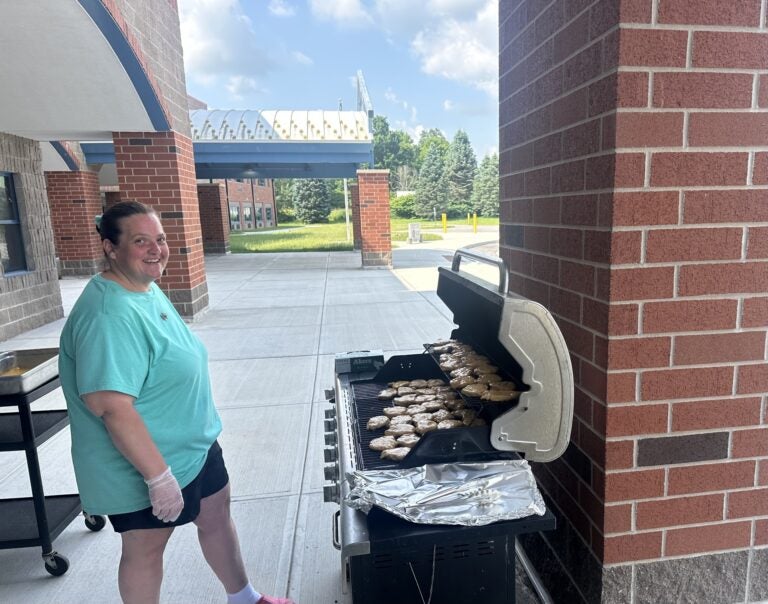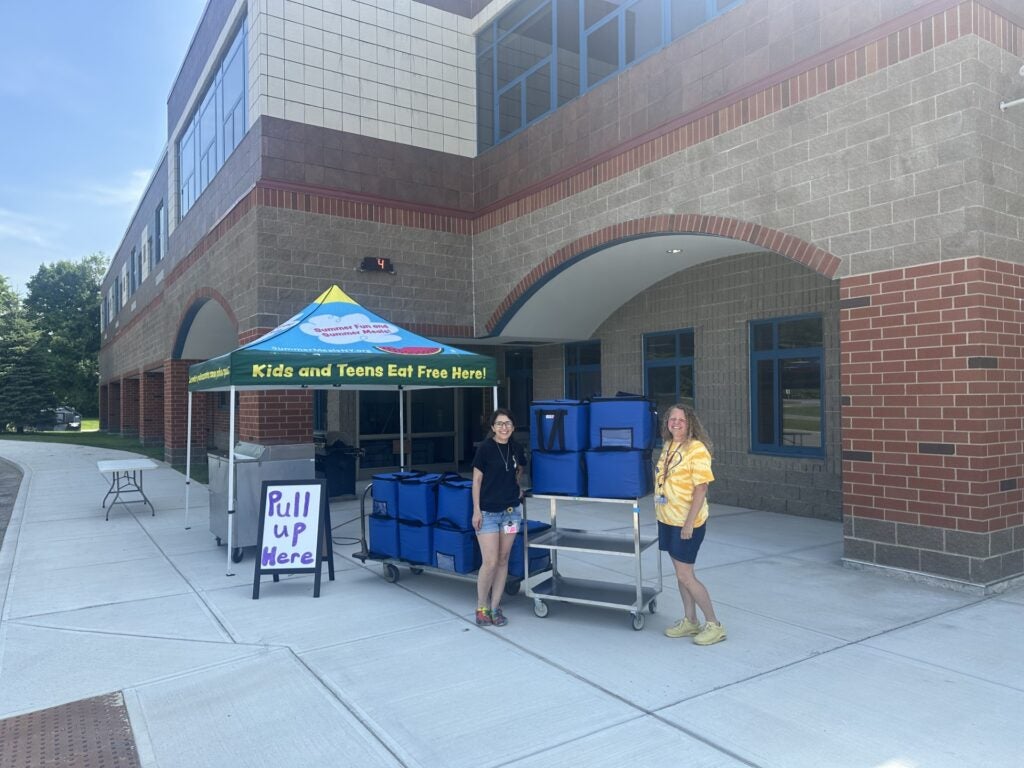

Welcome back to our blog series, the No Kid Hungry New York Partner Spotlight. We’ll be speaking to our partners across the state, learning what’s new in their summer meals programs, and celebrating the tremendous work they do to ensure that more kids have access to the the fuel they need to learn, grow and thrive. This week, we heard from Blaine Hoppel at Edwards-Knox Central School District, a rural K-12 district serving four towns in St. Lawrence County.
Tell us about your community. What makes the area special?
Edwards-Knox Central School serves a close-knit, rural community in Hermon, New York, where tradition, resilience, and community pride run deep. Surrounded by the natural beauty of the North Country, our area values hard work, strong family ties, and supporting one another. The school is the heart of the community, bringing people together for events, athletics, and academics. What makes us special is the strong bond between students, staff, and families. Everyone plays a role in helping our youth grow and succeed!
What are some of the challenges (or barriers) that kids and families face during the summer? How has implementing more flexible summer feeding options helped to overcome this?
In our rural district, families face significant challenges in accessing healthy food during the summer months. The Edwards-Knox Central School District spans 254 square miles, with many families living over 23 miles from the nearest grocery store offering fresh food. Limited transportation, high poverty rates, and a lack of local resources create substantial barriers to food security. During the school year, many students rely on the school for most of their weekly nutrition through free breakfast, lunch, and after-school snack programs. Without these supports in the summer, food insecurity becomes a critical issue. Traditional congregate meal models have been difficult for our community due to transportation issues and the economic burden of traveling long distances for a single meal. By implementing rural non-congregate meal options, we’ve been able to distribute a week’s worth of breakfasts and lunches at once. This flexible, community-based model has reduced travel demands and made it easier for families to access nutritious food. It ensures that children continue to receive consistent, healthy meals during the summer, despite the logistical challenges of our rural setting.
What are the most popular items on your summer menu? What is your favorite item to serve?
Some of the most popular items on our summer menu are the personal pizzas and our locally sourced fruits and vegetables. The popularity of the personal pizzas comes as no surprise, they’re a favorite during the school year as well! Kids consistently look forward to them, and they’re easy to include in grab-and-go style meals.
Through our farm-to-school initiatives, students have developed a greater appreciation for where their food comes from. There’s a noticeable sense of pride in consuming fresh, local goods. It’s rewarding to see kids excited about eating fresh fruits and vegetables, and it’s one of our favorite parts of the program.
What would you say to other program leaders who are reluctant to implement flexible summer feeding options such as grab-n-go, pick-up meals and home-delivered meals?
I would say “Don’t underestimate the impact these models can have, especially in rural or high-poverty areas. Flexibility is not just a convenience; it’s a necessity for families facing real barriers like transportation challenges, tight work schedules, and limited local food access”.
We were once in the same position, unsure of how it would work or whether the effort would be worth it. But what we found is that these models remove obstacles instead of creating more. By offering weekly pick-ups we’ve reached more kids, reduced stigma, and helped ease the burden on families who are already doing their best to get by.
What keeps you motivated to do this work?
What keeps me motivated is knowing the real tangible impact this work has on the lives of our students and their families. When a parent tells us that our summer meals helped stretch their grocery budget or that their child looks forward to the food every week, it reinforces that what we’re doing matters. For many kids in our district school meals are a critical source of nutrition not just during the school year, but all year round.
At No Kid Hungry New York, we thank Blaine and the food service staff members at Edwards-Knox Central School District for their dedication and enthusiasm in feeding kids throughout the summer. We’re grateful to support their work and honored to shine a spotlight on their extraordinary program!

